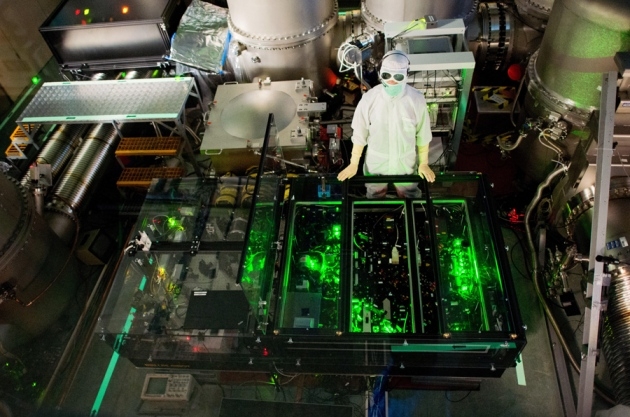Tricks to mute quantum noise aid hunt for gravitational waves

The GEO600 gravitational-wave detector in Hanover, Germany, tests technologies that are deployed in larger gravitational-wave observatories such as LIGO.
Physicists find ways to make LIGO and other gravitational-wave detectors even more sensitive.
Elizabeth Gibney
12 July 2017
Gravitational-wave observatories have some of the most sensitive detectors on the planet, which allows them to spot the faint ripples in space-time that pass through Earth from the collisions of massive black holes billions of light years away. But their ability to catch more subtle signals is constrained by fundamental quantum limits. Now physicists are devising tricks to get around this problem. The goal is to peer farther into the Universe and to spot the effects of collisions between less massive objects, such as neutron stars.
The US-based Advanced Laser Interferometer Gravitational-Wave Observatory (LIGO) is already planning to use photonics techniques to ‘squeeze’ light. That should increase LIGO’s sensitivity by 50%. Quantum physicists from outside the gravitational-wave community are pitching in with new ideas, too. In Nature this week, they describe a technique that could, in theory, double the sensitivity of detectors (C. B. Møller et al. Nature 547, 191–195; 2017).
See full text